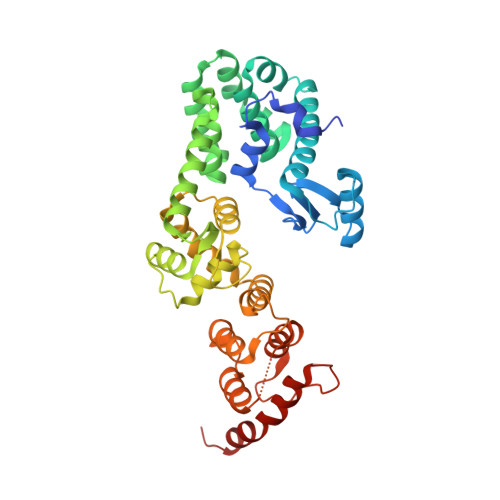Discovery of Novel Pyrazolo-pyridone DCN1 Inhibitors Controlling Cullin Neddylation.
Kim, H.S., Hammill, J.T., Scott, D.C., Chen, Y., Min, J., Rector, J., Singh, B., Schulman, B.A., Guy, R.K.(2019) J Med Chem 62: 8429-8442
- PubMed: 31465221
- DOI: https://doi.org/10.1021/acs.jmedchem.9b00410
- Primary Citation of Related Structures:
6P5V, 6P5W - PubMed Abstract:
Chemical control of cullin neddylation is attracting increased attention based largely on the successes of the NEDD8-activating enzyme (E1) inhibitor pevonedistat. Recently reported chemical probes enable selective and time-dependent inhibition of downstream members of the neddylation trienzymatic cascade including the co-E3, DCN1. In this work, we report the optimization of a novel class of small molecule inhibitors of the DCN1-UBE2M interaction. Rational X-ray co-structure enabled optimization afforded a 25-fold improvement in potency relative to the initial screening hit. The potency gains are largely attributed to additional hydrophobic interactions mimicking the N-terminal acetyl group that drives binding of UBE2M to DCN1. The compounds inhibit the protein-protein interaction, block NEDD8 transfer in biochemical assays, engage DCN1 in cells, and selectively reduce the steady-state neddylation of Cul1 and Cul3 in two squamous carcinoma cell lines harboring DCN1 amplification.
Organizational Affiliation:
Department of Pharmaceutical Sciences , University of Kentucky , Lexington , Kentucky 40508 , United States.
















